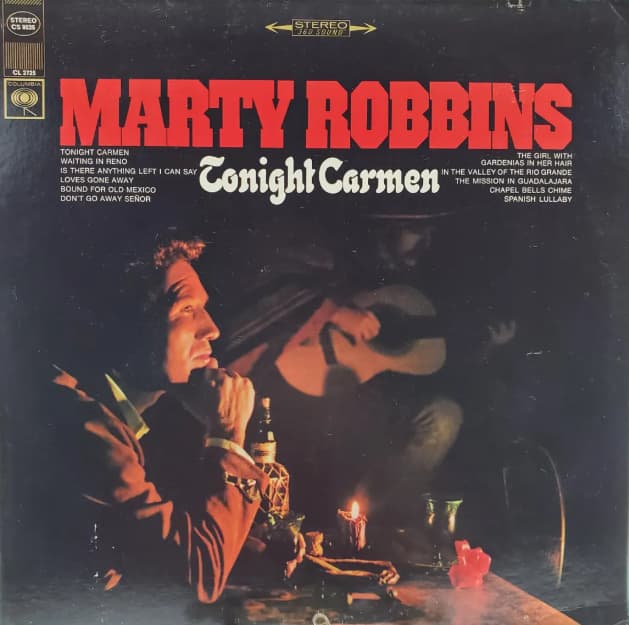
An Ode to Lost Love and the Lingering Soul of the Southwest
Ah, the late 1960s—a time when the music landscape was shifting, but the enduring charm of the American cowboy ballad, steeped in Spanish guitar and sun-baked tragedy, still held a firm place in the hearts of those who appreciated a good, long story told in song. And few were better at spinning those vivid, romantic yarns than the magnificent Marty Robbins. His 1967 album, Tonight Carmen, was a testament to his unique artistry, a collection that continued his rich tradition of border narratives and tales of doomed love. Nestled among its tracks is the evocative, haunting gem: “In the Valley of the Rio Grande.”
While the album’s title track, “Tonight Carmen,” rightfully soared to the No. 1 spot on the Billboard Hot Country Songs chart in 1967, “In the Valley of the Rio Grande” was an album cut, a deep track that speaks softly but powerfully to those of us who listen past the hits. It wasn’t the kind of song destined for a high chart position; rather, it was a piece of atmosphere, a slow, gentle burn that perfectly encapsulated the mood of the album. The lack of major chart recognition doesn’t diminish its quality; instead, it casts it as a beloved hidden treasure, often found on the B-side of singles like Gardenias in Her Hair, another cut from the same LP. For those who wore out the grooves of their Tonight Carmen vinyl, this song was as essential as any radio smash.
The meaning of “In the Valley of the Rio Grande” is one of profound, yet placid, sorrow. It’s an aural painting of loneliness and acceptance, set against the timeless, indifferent beauty of the Southwest. The song, credited to A. Russell, is steeped in the “Tex-Mex” sound Marty Robbins made his own—a lilting waltz rhythm underscored by the sophisticated, warm strumming of a Spanish guitar, likely featuring the masterwork of guitarists like Grady Martin, a signature element that makes so many of Robbins’s Western songs instantly recognizable.
The story behind the song isn’t as dramatic as the gunfights and jealous rage of “El Paso,” Robbins’s most famous ballad, but it carries a different, more reflective weight. It tells a simple, affecting tale: the narrator is alone, somewhere in the vast, serene landscape carved by the Rio Grande, haunted by the memory of a love that has gone away. The imagery—the cottonwood trees, the whisper of the wind, the shadow of the mountains—are all witnesses to his solitary grief. There is no grand chase, no final duel; just the quiet, aching realization that what was lost is gone forever. This is the beauty of the track: it’s the quiet aftermath, the moment a man sits down and truly absorbs the sting of his regrets, finding solace only in the majestic, unchanging nature around him.
For those of us who lived through the era of Robbins’s peak, “In the Valley of the Rio Grande” evokes a powerful nostalgia. It recalls an age when Country music could take its time, allowing a story and a mood to unfold unhurriedly. It’s a song for late nights and fading light, for contemplating the passage of time and the beautiful, melancholy weight of memory. It serves as a gentle reminder that even the most dashing, gun-slinging heroes—or their balladeers—must eventually confront the solitude of a quiet valley. The smooth, almost conversational delivery of Marty Robbins feels like an old friend sharing a deep, personal heartache across a campfire, the only sound after his voice the soft, sad strum of a guitar.